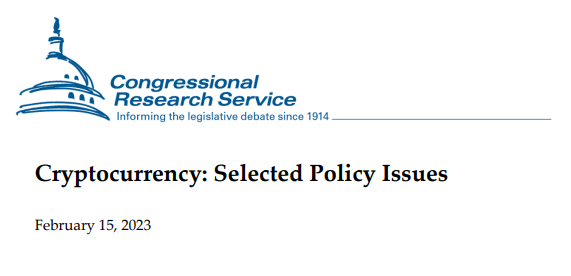
Introduction
In January 2009, Satoshi Nakamoto—the pseudonym of an unidentified computer scientist (or
collective of scientists)—mined the first block (or group of transactions) on the Bitcoin network a
few months after publishing the “Bitcoin Whitepaper.”
This Genesis Block—as the first
transaction on the Bitcoin network was called—included an encoded message that referred to a
newspaper headline published around that time: “Chancellor on brink of second bailout for
banks.”
The article the block referenced described a bailout for English banks in the immediate
aftermath of the global financial crisis. While the message was relevant historical context for
when the transaction occurred, transactions processed on the Bitcoin network include dates and
timestamps, so the reference to the English bank bailout was unnecessary. Instead, Satoshi
Nakamoto and commentators have since clarified that this allusion to banking conditions was
intended to draw a contrast between the new financial paradigm Bitcoin represented and the
traditional financial system. These early developers did not want to rely on a financial system
dependent on third parties—especially governments and central and commercial banks—but
instead created a system to bypass them.
Cryptocurrency’s initial use case was as a combined payment system and unit of account that
eschewed intermediaries. Traditional payments systems are composed of various banks, payments
processors, credit card networks, central clearinghouses, central banks, and a vast technological
infrastructure that supports it. In this system, banks ultimately validate customer transactions and
log the details of the transactions digitally in their private ledgers. Banks then submit these details
via messaging networks, which authorize transactions to occur, and ultimately facilitate the
exchange of funds at banks’ master accounts at a national central bank, which in the United States
is the Federal Reserve. As such, transactions between two individuals with accounts at two or
more different financial institutions involve at least two commercial bank ledgers and the ledger
of at least one central party, which acts as an intermediating agent for the transacting parties. (See
Figure 1 for a simplified version of transactions.) In addition to this massive infrastructure, the
system requires trust and security, which safeguards deposits regardless of economic conditions.
It requires that banks perform their responsibilities effectively and maintain effective risk
management controls, including over their payments systems. Moreover, it obligates banks to do
their best to safeguard their data and extend services to qualifying customers.
Cryptocurrency, on the other hand, is a payment and value storage system that functions as
“electronic cash protected through cryptographic mechanisms instead of a central repository or
authority.”
In lieu of independent financial institutions with individual ledgers relying on third-
party mediation and securing consumer trust, the crypto system consists of a single ledger
distributed to all members of the network that is constantly updated. Users believe the system
works because they can see it and track it. The system uses cryptography and incentives for
diverse participants to secure the network.
Since 2009, the crypto industry—which now consists of thousands of cryptocurrencies and
various applications—has experienced both relatively low adoption as a payment tool and various
periods of rapid price increases and decreases. These two facets combined have helped fuel
crypto as a speculative asset at the expense of its use as a payment tool. In this context, crypto
became a victim of its own success. Using crypto for routine payments was not attractive when
holding it could yield significant return.
Its novelty and opaqueness and the mystery behind its
origins sustain a lore that boosted cryptocurrency’s popularity.
At the same time, the industry is rife with ideological tensions that have become more visible
since the market lost more than 70% of its peak market capitalization and some of its most visible
companies—including FTX, which at its peak had been the third-largest crypto exchange—
collapsed.
Some say the industry is a technological solution in search of a problem. Some who espouse this
view note that the technology and industry as a whole do not have an economic or productive
capacity beyond speculation or the expectation of appreciation.
Moreover, if there is no
productive use for crypto, then its large carbon emissions and energy use appear more
problematic, according to this view. The Bitcoin network alone, for example, uses as much
energy and produces emissions comparable to nation states. Proponents of crypto disagree,
believing that it is a new and innovative technology with potentially valuable and paradigmshifting
applications, many of which may not yet be realized. Internally, the recent and relentless
failure of centralized crypto institutions highlights the tension between (1) factions that adhere to
the idealistic origins of decentralization and (2) the institutions that have fueled its trajectory from
obscure technology to financial mainstay.
The rise of cryptocurrencies has produced a host of policy issues that may be of interest to
Congress. In light of crypto’s various potential use cases and factions (e.g., payments vs.
speculative investment, decentralized vs. centralized), crypto has become a Rorschach test of
sorts in which users and policymakers see in it what they value most and interpret policy
considerations through that same lens. The host of policy issues raised includes, among others:
managing the tension between public interest in privacy and government desire to monitor and
eliminate illicit financial activity, the ongoing debate on the adequacy of the existing regulatory
structure, determining whether cryptocurrencies should be considered currencies or property for
tax purposes, and the industry’s potential contribution to climate change.
In March 2022, the Biden Administration issued Executive Order 14067 on Ensuring Responsible
Development of Digital Assets acknowledging these various policy implications, with the stated
objectives of protecting consumers, ensuring American and global financial stability, preventing
illicit financial activity, and promoting access to affordable financial resources.
This report provides an overview of cryptocurrency, including the technology behind it. It
examines the different ways users can participate in the market—distinguishing on-chain
decentralized transactions from centralized off-chain transactions and the entities providing these
services. It provides an overview of some of the key assets that make up the market. Finally, it
examines policy issues, including, among others, how the existing regulatory frameworks treat
cryptocurrencies and its various functions.
What Is Cryptocurrency?
Cryptocurrencies consist of both the units of stored value and the networks on which they are
exchanged. The cryptocurrencies discussed in this report are decentralized and permission-less,
which means that neither a transacting participant nor a node, which is a component that supports
the system in some capacity, requires any permission or special authorization to participate in the
network or modify the ledger of transactions. (Some of the system-supporting participant nodes
are called validators or miners.) Cryptocurrency networks are comprised of unaffiliated
participants operating specific software that they have downloaded on individual computers—not
a central server. These key features distinguish the technology from traditional bank ledger




